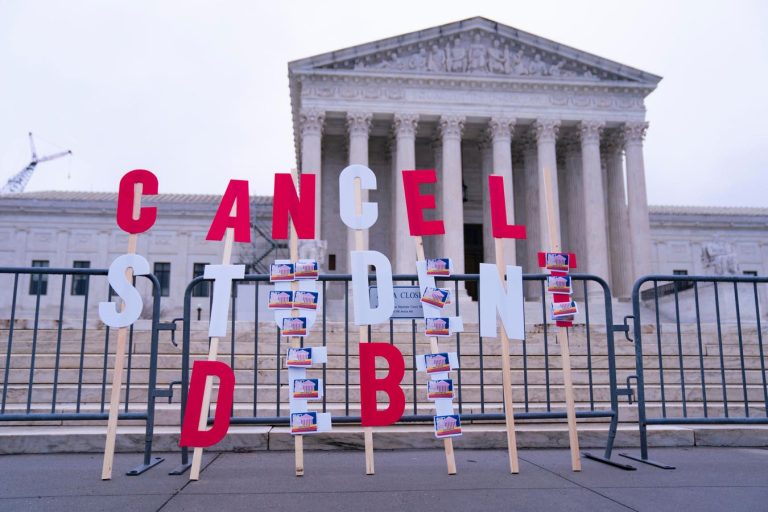By Chris Farrell, Next Avenue
Mention college and the conversation swiftly turns to student loans — with good reason. The current loan-based system to pay for postsecondary education is failing too many students, including a surprisingly large number of debtors nearing or in their retirement years.
For one thing, $1.6 trillion worth of student loans were outstanding in the first quarter of 2024, up from $240 billion during the same period of 2003. Too many former students find themselves struggling to pay off their debts and almost one in six federal student loan borrowers are in default.
The U.S. Department of Education in March 2020 suspended payments on student loans in response to the COVID-19 pandemic, but payments resumed after September 30, 2024.
Courts Have Blocked Relief Plans
For another, various courts, including the U.S. Supreme Court, have ruled favorably on lawsuits that politicians in Republican-controlled states have filed to block two signature initiatives the Biden Administration proposed to address the debt crisis — a student loan forgiveness program and a new student loan repayment plan known as Saving on a Valuable Education, or SAVE.
On July 18, for example, the U.S. Court of Appeals for the 8th Circuit in St. Louis, Mo., ruled in favor of a request by six Republican-led states to stop the Biden administration from initiating SAVE until litigation was resolved. The ruling has thrown loan repayment terms for millions of borrowers into limbo.
Among the debt-burdened higher-education borrowers are millions of Americans older than age 60 who collectively hold more than a billion dollars in student loan debt taken out at least a decade ago. Many of these older borrowers survive on low and unstable incomes with little savings or wealth.
Many Other Hurdles Ahead
The case for wiping out the student loans of this largely ignored cohort of older borrowers is compelling. Several proposals are making the rounds in Washington, D.C. Hopefully, these initiatives will see the light of day soon, but they are vulnerable to the course of litigation over the SAVE program and policy preferences of the next President.
Let’s dive into the data, thanks to a series of recent reports by the New America think tank. Some 3.5 million people 60 years and older owe more than $125 billion in student loans. The number of borrowers in this age group has risen 500% since 2004 and their outstanding debt has increased 19-fold.
Older borrowers used most of the debt (80%) to fund their own education, often a decade or more in the past. This debt-burdened older population is disproportionately women and people of color. These borrowers didn’t get the kind of financial return on higher education that would have made the expense manageable and worthwhile. They may not have graduated or may have attended a predatory for-profit school.
“College should be an engine of economic mobility, and borrowing to access higher education should not lead to a lifetime of debt,” write Tia Caldwell and Sarah Sattelmeyer for New America. “But for a group of seniors — disproportionately women and people of color — the engine sputtered.”
The Magic Of Compounding, In Reverse
The sums owed can increase for long-term defaulters as interest is added to the loan principal. Interest is charged off the higher balance going forward. Imagine the magic of compounding, but in reverse. “So many older adults that have student loans are in default,” says Abby Shafroth, co-director of advocacy for the National Consumer Law Center in Boston. “Before the pandemic, one-in-three was in default.”
Perhaps most disturbing, Social Security beneficiaries who have defaulted on federal student loans can have a portion of their monthly benefit check garnished by the government. By law, the federal government has to leave only $750 a month to pay for basic life expenses.
The Government Accountability Office in 2015 found 58% of student loan borrowers ages 65 or older and subject to the Social Security offset had their benefits reduced below — or pushed further below — the federal poverty level. Odds are the situation has deteriorated further, considering cost-of-living increases over the intervening years.
Helping People Who Pay On Time
Clearly, the retirement security of older adults with outstanding student loans is at risk. The threat is especially worrisome for people on Social Security (or about to file a claim) who could have their benefits garnished come October 2024.
Several initiatives could help alleviate the situation. Top of the list is a Department of Education proposal to cancel the debt of aging, lower-income borrowers. (The Education Department is soliciting comments on the proposal.)
Undergraduate federal loans would be forgiven after 20 years of consistently making income-adjusted payments and graduate federal loans after 25 years. Eliminating these long-lived federal student loans wouldn’t cost much since it’s doubtful the federal government would get additional payments from retired borrowers.
“These proposed provisions have the potential to meaningfully improve economic security for approximately 2.3 million older people struggling with unaffordable student loan debt by providing targeted relief to borrowers who entered repayment decades ago and have not yet been able to pay off their debt,” Mary B. O’Donnell, the president and chief executive of RRF Foundation for Aging, wrote in a formal comment submitted to the U.S. Department of Education. (Disclosure: RRF Foundation for Aging is a funder of Next Avenue.)
Offering A Fresh Start
The Education Department is also trying, through its Fresh Start program, to get borrowers who are currently in default out of that status quickly. The free enrollment plan offers a suite of benefits, such as access to the new income-driven repayment plan SAVE and returning loans to current status on credit reports. The Fresh Start option runs until September 30. Unfortunately, there has been relatively little take up on the offer. The option isn’t well known by older borrowers who could benefit.
There is some recognition on Capitol Hill that it isn’t good policy for the federal government to garnish Social Security benefits to help pay for defaulted federal student loans. Democratic Representatives John Larson of Connecticut, Raúl Grijalva of Arizona and several cosponsors have reintroduced the Protection of Social Security Benefits Restoration Act to safeguard benefits from garnishment.
The student-loan debt burden among older adults is part of a larger shift. More older adults than ever are carrying debt into retirement, the amount of debt is up and “the vast majority of this growth is driven by borrowers who are at ‘high risk’ of financial trouble,” according to an analysis by the Center for Retirement Research at Boston College.
Eliminating antediluvian student loan debts held by vulnerable older adults seems both just and good public policy.
Read the full article here









